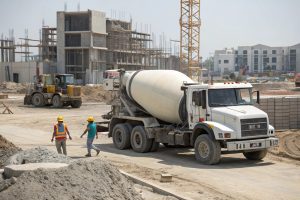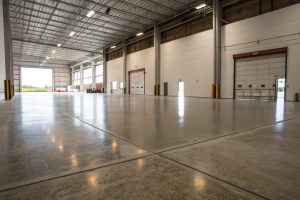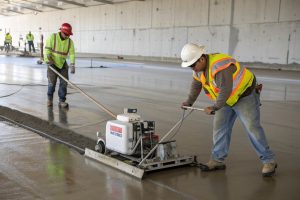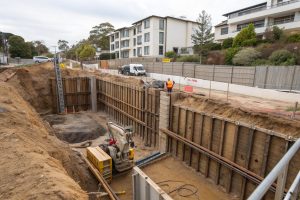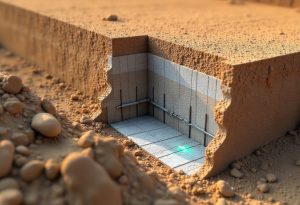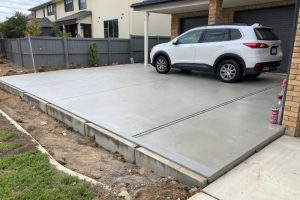Expert Slab Demolition Services in Canberra ACT
What Slab Demolition Really Means for Your Project
Whether you’re planning a full house rebuild, adding an extension, or replacing an aging garage floor, proper slab demolition is where quality construction starts. And in Canberra’s unique climate – where freeze-thaw cycles and our clay soils put extra stress on concrete – knowing how to safely remove old slabs without damaging what you’re keeping is an art form as much as it is a science.
We’ve demolished everything from 1960s house slabs in Yarralumla to massive warehouse floors in Fyshwick. We’ve worked around underground services that weren’t on any plans, discovered asbestos in slabs where no one expected it, and carefully removed sections of concrete in spaces so tight you wouldn’t think equipment could fit.
But here’s what matters most: we do it safely, we do it clean, and we get your project moving forward without the drama and delays that seem to plague this industry.
Let me walk you through what professional slab demolition actually looks like, what you need to know before that first piece of concrete gets broken, and why cutting corners on this critical first step will cost you way more than you’ll ever save.
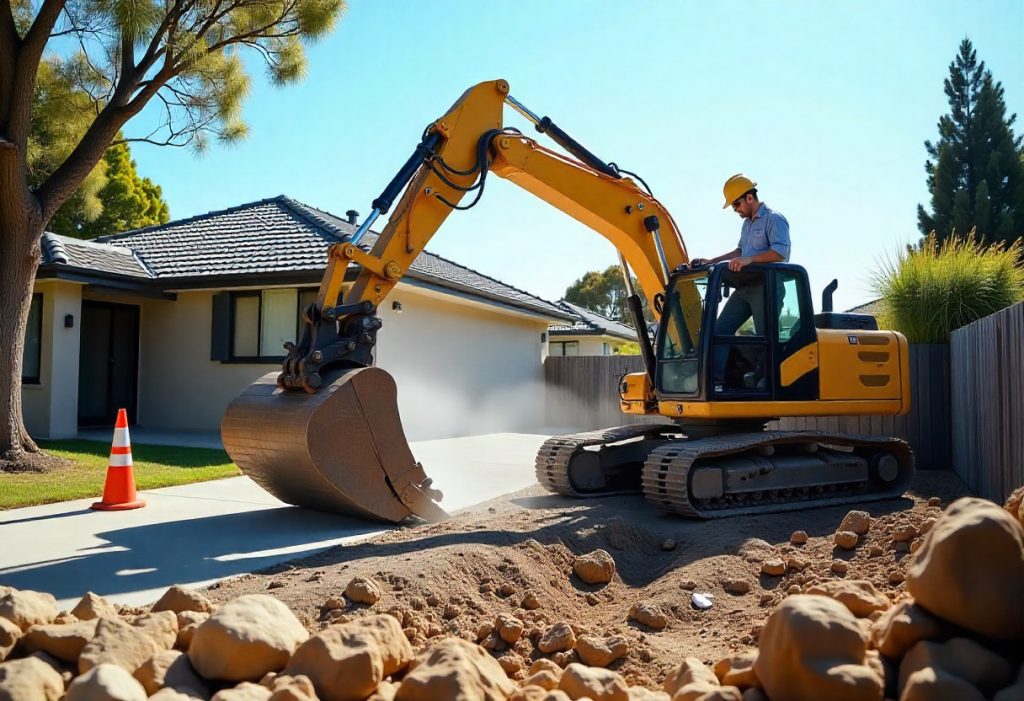
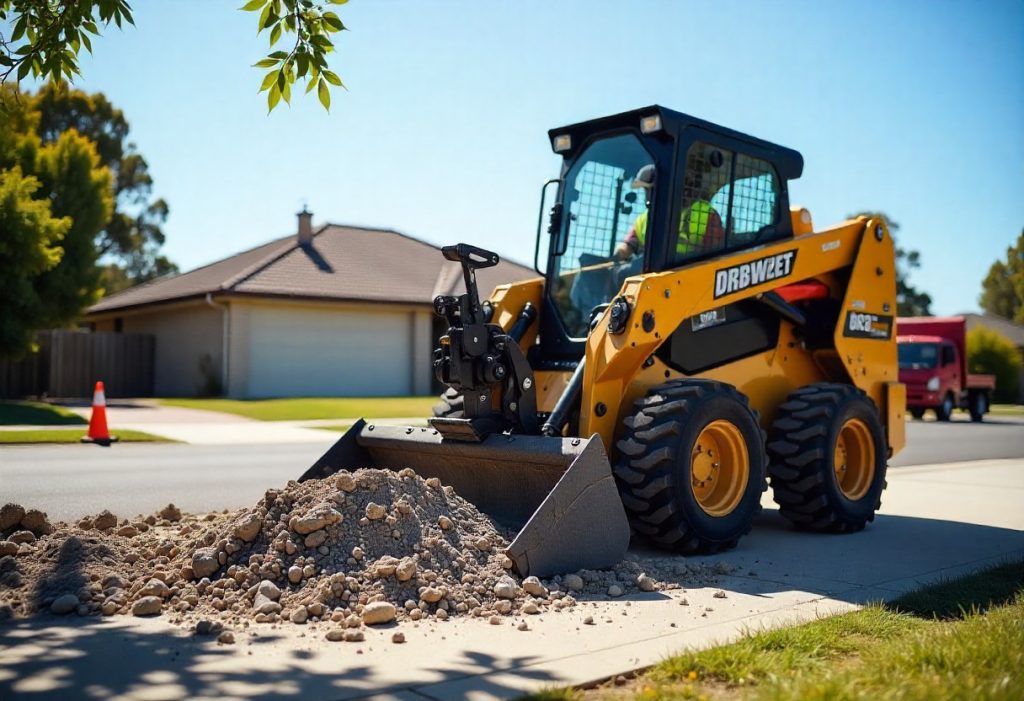
How We Demolish Concrete Slabs: Methods and Equipment
Demolishing concrete slabs requires tailored methods depending on thickness, reinforcement, and site conditions. Thin residential slabs may only need jackhammers and small excavators, while heavily reinforced 300mm commercial slabs demand 20–30 tonne machinery with hydraulic breakers.
Reinforced slabs require cutting mesh, rebar, or unexpected steel using grinders, saws, and shears to ensure safe removal and proper recycling. Post-tension slabs are high-risk and demand specialist expertise, scanning, and engineered release of cables to prevent dangerous accidents.
In confined spaces, hand demolition with jackhammers and saws is often the only option, allowing precise work around walls and services. Our diverse equipment fleet, from compact 5-tonne excavators to heavy-duty breakers and deep-cutting saws, ensures efficient, safe slab demolition for residential, commercial, and industrial projects across Canberra.
Types of Slab Demolition Services We Handle in Canberra
House Slab Removal
For knockdown-rebuilds or major renovations, we safely remove old house slabs—whether from the 1950s or recent builds. Each slab is assessed for asbestos, post-tension cables, soil movement, and roots before demolition begins.
Garage & Workshop Floors
Garage slabs are thick, reinforced, and often damaged by traffic, oils, and freeze-thaw cycles. We carefully remove these while protecting surrounding walls, doors, and utilities.
Patio & Outdoor Slabs
Outdoor slabs crack and sink due to Canberra’s harsh weather and poor drainage. We remove failed concrete fully, addressing landscaping and drainage for lasting results.
Commercial Floors
Warehouse and factory slabs are large-scale, thick, and heavily reinforced. We manage complex demolitions while ensuring business continuity, safe asbestos handling, and precise grading.
Partial Slab Removal
For extensions or modifications, we use precision cutting to remove sections cleanly, protect existing concrete, and properly treat exposed edges to prevent future slab failure.
Safety and Compliance: Doing Slab Demolition the Right Way
What Makes Canberra Slab Demolition Different
Council Permits for Structural Slab Removal
Structural slab removals often require ACT council approval, engineered drawings, and method statements. We coordinate with architects and building designers to ensure compliance, avoiding fines, stop-work orders, and costly rectifications.
Canberra Soil Conditions and Foundation Implications
Canberra’s reactive clay soil expands and contracts, affecting slabs over time. We assess cracking, settlement, and tree root impacts to plan demolition safely and prepare the ground for stable new foundations.
Waste Disposal Regulations and Recycling Options
All concrete is separated, recycled, or disposed of according to ACT regulations. Reinforcement steel and contaminated material are handled separately, with full documentation provided for compliance and environmental responsibility.
Seasonal Timing for Slab Demolition Projects
Weather affects demolition safety and efficiency. Spring and autumn are ideal, but we plan for year-round work, adjusting for frost, wet ground, heat, or smoke from bushfires to prevent delays and equipment issues.
If you’re ready to take the next step and get started on your concrete job with Canberra’s best concreter, contact us now for a no obligation quote.
The Slab Demolition Process: What to Expect
Initial Assessment and Site Inspection: Every project begins with an on-site inspection. We measure slab thickness, check reinforcement, assess access, identify nearby structures, and locate utilities. This ensures a safe, accurate plan for residential or commercial jobs.
Detailed Quote Breakdown: Our quotes are transparent, listing labor, equipment, waste disposal, permits, asbestos testing, and timelines. Residential demolitions range from one day for patios to a week for full house slabs with complex access.
Pre-Demolition Preparation: Before work begins, we arrange permits, notify neighbors, set up site protection, and conduct utility locates and asbestos testing. Equipment and debris management are planned in advance for safety and efficiency.
Demolition Day Execution: Work is carried out in sections using jackhammers, excavators, and other equipment. Dust suppression, debris removal, and adjustments for unexpected issues ensure smooth progress while maintaining communication with the client.
Site Cleanup and Preparation: After demolition, we remove debris, sweep, hose down, and prepare the site for the next phase, whether it’s inspection, fill, or a new slab pour.
Overall Approach: Our process ensures safe, efficient, and professional slab demolition tailored to site conditions, project type, and client requirements.
Frequently Asked Questions About Slab Demolition in Canberra
Slab demolition pricing depends on size, thickness, reinforcement, access, and disposal requirements. A basic residential patio slab might cost $2,000-$4,000 to demolish and remove. A full house slab runs $8,000-$20,000 depending on size and complexity. Commercial warehouse floors can cost $50,000 or more for large areas with heavy reinforcement.
Access affects pricing significantly. If we can get a 20-tonne excavator to the slab, the work goes fast and costs less. If we’re limited to hand tools and small equipment, labor costs increase.
Timeline depends on slab size and project complexity. A small patio slab takes one day. A standard residential garage slab takes two to three days. A full house slab might take a week when you factor in utility protection, methodical demolition, and complete site cleanup.
Commercial projects run longer – a large warehouse floor demolition can take several weeks when you’re working around business operations and managing huge quantities of waste.
Weather can delay work. Heavy rain makes sites inaccessible and creates safety issues. Extreme heat or cold affects crew productivity and equipment operation.
Demolished concrete gets trucked to recycling facilities where it’s crushed into aggregate for road base and other construction uses. The ACT has excellent concrete recycling infrastructure, and nearly all demolition concrete gets recycled rather than going to landfill.
Reinforcing steel gets separated and sent to metal recyclers. Mixed loads – concrete with significant contamination from other materials – cost more to dispose of and might not be recyclable.
Asbestos-containing concrete goes to licensed disposal facilities with full documentation and tracking.
If you’re determined to do it manually, here’s what actually works. A 6kg sledgehammer is your main weapon – anything lighter just bounces off without doing much damage. You’ll also want a cold chisel and club hammer for working along cracks and breaking up the chunks once you’ve created some initial fractures.
A pry bar helps lift broken sections, and you’ll definitely need a wheelbarrow because concrete is heavy. A square metre of 100mm thick concrete weighs about 240kg. That’s not something you’re carrying in a bucket.
For Canberra slabs, expect to deal with reinforcing mesh in anything poured after the 1970s. That means you’ll need bolt cutters or an angle grinder to cut through the steel once you’ve broken the concrete around it. The mesh doesn’t just sit there – it holds everything together, which is exactly what you don’t want when you’re trying to break things apart.
Short answer – you can, but you probably shouldn’t, especially in Canberra. I get asked this constantly by homeowners who want to save money by covering up their cracked driveway instead of removing it.
Here’s the problem: whatever caused the original slab to crack – reactive clay soil movement, poor compaction, tree roots, bad drainage – is still there underneath. Pour new concrete over the top, and within a year or two you’ll see cracks appearing in exactly the same patterns as the old slab.
Canberra’s clay soil is particularly nasty for this. The soil moves with moisture changes, and a failed slab underneath provides uneven support for anything you pour on top. You end up with a new slab that’s essentially sitting on broken pieces that shift independently. Recipe for failure.
